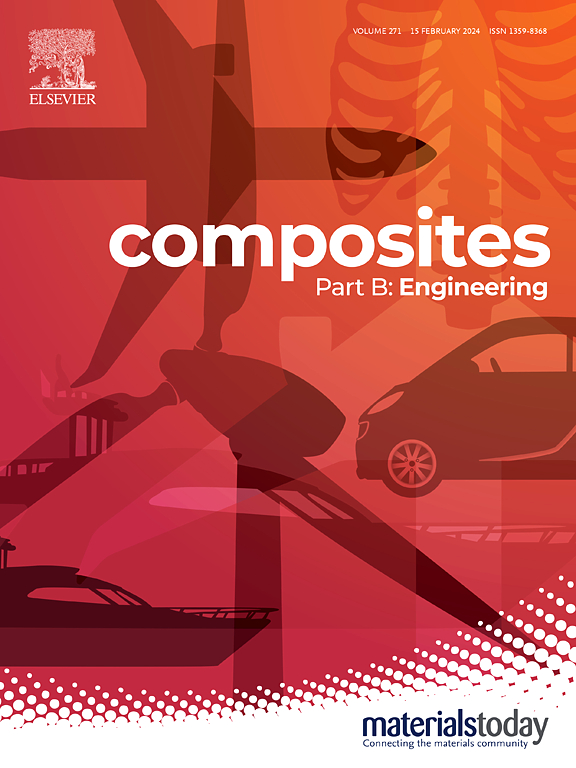In-situ hydrophobic protective layer for suppressing hydrogen evolution corrosion and enabling high-efficiency silicon-air batteries with wide temperature adaptability
IF 12.7
1区 材料科学
Q1 ENGINEERING, MULTIDISCIPLINARY
引用次数: 0
Abstract
Silicon (Si), with its high theoretical capacity, highly negative redox potential (−1.69 V vs. SHE), abundance, and low cost, has attracted widespread attention as an anode material for air batteries. However, the specific electric double layer (EDL) between the Si anode and electrolyte causes severe hydrogen evolution corrosion, resulting in a significant deviation of the specific capacity from its theoretical value. To address this issue, a low-cost and high-efficiency additive strategy was developed. By introducing a small amount of dodecyl dimethyl benzyl ammonium bromide (DDBAB), which features a (C2H5)2N+ group that strongly interacts with OH−, and a hydrophobic C12H25 and C2H5, the EDL is altered and an in-situ hydrophobic protective layer is formed. This layer effectively repels active H2O from the Si anode/electrolyte interface and increases the barriers to hydrogen evolution reactions (HER). As a result, the hydrogen evolution inhibition efficiency of Si anode reached 99.36 %. The aqueous silicon-air batteries (SABs) lasted from 173 h to 500 h, and the energy density and specific capacity enhanced by 2.6-fold and 2.7-fold, respectively. Due to the temperature-insensitive binding energy between DDBAB and the Si anode, the quasi-solid-state SABs (QSSSABs), using PAAK-M gel electrolyte, as a proof of concept, exhibit a high specific capacity of 324.54 Ah kg−1, excellent stability across a wide temperature range (−10 °C to 60 °C), and great application potential.
原位疏水保护层抑制析氢腐蚀,实现具有广泛温度适应性的高效硅空气电池
硅(Si)作为空气电池的负极材料,具有理论容量大、氧化还原电位高(- 1.69 V vs. SHE)、丰度高、成本低等优点,受到了广泛的关注。然而,硅阳极与电解液之间的比电双层(EDL)会造成严重的析氢腐蚀,导致比容量与其理论值有较大偏差。为了解决这一问题,开发了一种低成本、高效率的添加剂策略。通过引入少量具有与OH−强相互作用的(C2H5)2N+基团和疏水C12H25和C2H5的十二烷基二甲基苄基溴化铵(DDBAB),改变了EDL,形成原位疏水保护层。该层有效地从Si阳极/电解质界面排斥活性H2O,并增加析氢反应的障碍(HER)。结果表明,硅阳极的析氢抑制效率达到99.36%。水相硅空气电池(SABs)的寿命从173 h延长到500 h,能量密度和比容量分别提高了2.6倍和2.7倍。由于DDBAB和Si阳极之间的结合能对温度不敏感,使用PAAK-M凝胶电解质的准固态SABs (QSSSABs),作为概念证明,具有324.54 Ah kg−1的高比容量,在宽温度范围(- 10°C至60°C)内具有出色的稳定性,具有很大的应用潜力。
本文章由计算机程序翻译,如有差异,请以英文原文为准。
求助全文
约1分钟内获得全文
求助全文
来源期刊

Composites Part B: Engineering
工程技术-材料科学:复合
CiteScore
24.40
自引率
11.50%
发文量
784
审稿时长
21 days
期刊介绍:
Composites Part B: Engineering is a journal that publishes impactful research of high quality on composite materials. This research is supported by fundamental mechanics and materials science and engineering approaches. The targeted research can cover a wide range of length scales, ranging from nano to micro and meso, and even to the full product and structure level. The journal specifically focuses on engineering applications that involve high performance composites. These applications can range from low volume and high cost to high volume and low cost composite development.
The main goal of the journal is to provide a platform for the prompt publication of original and high quality research. The emphasis is on design, development, modeling, validation, and manufacturing of engineering details and concepts. The journal welcomes both basic research papers and proposals for review articles. Authors are encouraged to address challenges across various application areas. These areas include, but are not limited to, aerospace, automotive, and other surface transportation. The journal also covers energy-related applications, with a focus on renewable energy. Other application areas include infrastructure, off-shore and maritime projects, health care technology, and recreational products.
 求助内容:
求助内容: 应助结果提醒方式:
应助结果提醒方式:


